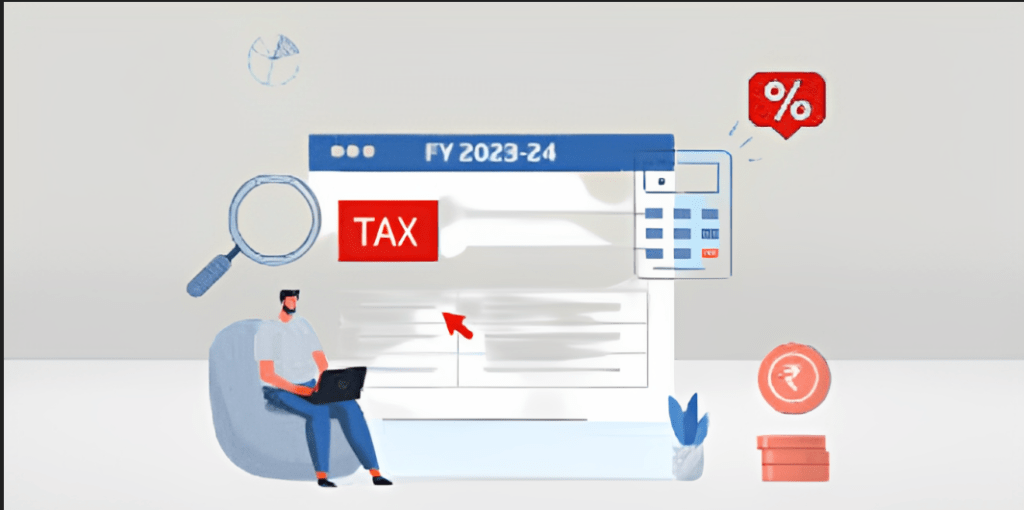
This article is written by Anjali Sanyal, an intern under Legal Vidhiya
ABSTRACT
The concept of “Previous Year” and “Assessment Year” is of paramount importance in the field of taxation law. Understanding these terms is crucial for both individuals and businesses to fulfill their tax obligations accurately. This abstract provides a comprehensive overview of the definitions, significance, and implications of previous year and assessment year in taxation law. The previous year, also known as the financial year, refers to the 12-month period in which income is earned or accrued. It is the basis for determining the taxable income and calculating the tax liability for individuals and entities. The previous year typically runs from April 1st to March 31st of the following year. During this period, taxpayers engage in various income-generating activities and incur expenses, which are relevant for tax assessment.
On the other hand, the assessment year is the year immediately following the previous year in which the income earned during the previous year is assessed for tax purposes. It is during the assessment year that taxpayers file their income tax returns, disclose their income, claim deductions, and compute their tax liability. The assessment year typically runs from April 1st to March 31st of the subsequent year. The relationship between the previous year and assessment year is crucial for determining tax liability. The income earned or accrued during the previous year is assessed and taxed in the corresponding assessment year. Any changes in tax laws or rates introduced in the assessment year may affect the tax liability of the previous year. Thus, staying updated with the tax provisions for the assessment year is essential for accurate tax compliance.
KEYWORDS: Assessment year, income, corresponding, previous year, liability, tax, accurate, etc.
INTRODUCTION
Income Tax law defines Previous Year, as defined in section 3 of Income Tax Act, 1961 (hereinafter referred to as “IT Act”). The Previous Year is the Financial Year immediately preceding the Assessment Year.
PREVIOUS YEAR UNDER INCOME TAX LAW
The term “Previous year” in the context of the Income Tax Act refers to the financial year immediately preceding the assessment year. In India, the assessment year is the year in which income tax is calculated and paid for the previous year.
For example, let’s say we are currently in the assessment year 2023-2024. The previous year for this assessment year would be the financial year 2022-2023. During the previous year, an individual or entity earns income and engages in financial transactions that are considered for income tax purposes in the assessment year.
The Income Tax Act provides provisions and guidelines for the computation, assessment, and collection of income tax for each previous year. It outlines various income categories, deductions, exemptions, and tax rates that apply to different taxpayers based on their income and other relevant factors.
ASSESSMENT YEAR UNDER INCOME TAX LAW
The assessment year in the context of income tax law refers to the year immediately following the financial year for which the income is assessed. In many countries, including India, the income tax laws follow a system where the assessment of income is done for a specific financial year and then the tax liability is determined for that year. The assessment year is the year in which the taxpayer’s income is assessed and tax returns are filed based on the income earned during the preceding financial year.
For example, if the financial year is from April 1, 2022, to March 31, 2023, the assessment year would be the year following this period, which is April 1, 2023, to March 31, 2024. During the assessment year, individuals and entities are required to file their income tax returns for the previous financial year, declaring their income, claiming deductions, and paying any taxes due.
DIFFERENCE BETWEEN PREVIOUS YEAR AND ASSESSMENT YEAR
Previous Year
- The previous year, also known as the financial year.
- The year in which an individual or entity earns income.
- It is the year preceding the assessment year. For example, if the financial year is from April 1, 2022, to March 31, 2023, then the previous year would be 2022-2023.
- During the previous year, we earn income from various sources, such as salary, business, profession, capital gains, etc.
- We are required to maintain proper records and documentation of your income and expenses during this period.
Assessment Year
- The assessment year is the year following the previous year.
- In which your income earned during the previous year is assessed for taxation purposes.
- It is the year in which you file your income tax return and your income is assessed by the tax authorities. For example above, if the previous year is 2022-2023, then the assessment year would be 2023-2024.
- During the assessment year, we need to compile all the relevant information about our income, deductions, and investments to compute our taxable income.
- We file our income tax return based on this information, and the tax authorities assess your income and determine the amount of tax we owe.
IMPORTANCE OF PREVIOUS YEAR
Here are some key reasons why the previous year holds importance:
- Determining the Taxable Income: The previous year is the period during which income is earned and accrued. It serves as the basis for computing the taxable income for that year. Income earned in the previous year is subject to tax in the subsequent assessment year.
- Accounting and Bookkeeping: The previous year is crucial for maintaining proper accounting records and books of accounts. It helps individuals and businesses accurately record their income, expenses, assets, and liabilities during the specific period.
- Compliance and Filing of Returns: The previous year determines the time period for which an individual or entity needs to file their income tax returns. The assessment year follows the previous year, and taxpayers are required to file their returns for the income earned during the previous year within the prescribed due dates.
- Tax Planning and Investments: The previous year plays a vital role in tax planning strategies. Taxpayers can assess their income and expenses during the previous year to plan their investments, claim deductions, and avail of tax benefits available under the income tax law.
- Carry-forward of Losses and Set-off: The previous year is important for determining the treatment of losses incurred by individuals or businesses. Taxpayers can carry forward certain types of losses from the previous year and set them off against future profits or incomes, thereby reducing their overall tax liability.
- Assessment and Audit: The income tax authorities conduct assessments and audits to ensure compliance with tax laws. The previous year’s financial records and returns form the basis for such assessments, providing a snapshot of the taxpayer’s income, expenses, deductions, and tax payments during that period.
IMPORTANCE OF ASSESSMENT YEAR
Here are some key reasons why the assessment year holds importance:
- Tax Calculation: The assessment year is used to calculate the tax liability of an individual or entity. The income earned during a financial year Is assessed and taxed in the subsequent assessment year based on the prevailing tax rates and rules for that year.
- Filing Income Tax Returns: The assessment year determines the period for which the income tax return needs to be filed. Taxpayers are required to file their returns for a specific financial year in the assessment year following that year. For example, income earned during the financial year 2022-2023 will be assessed and taxed in the assessment year 2023-2024, and the taxpayer needs to file the tax return for that financial year in the assessment year.
- Compliance and Deadlines: The assessment year sets the deadlines for various tax-related activities. It specifies the due dates for filing income tax returns, paying taxes, claiming deductions, and submitting supporting documents. Taxpayers need to comply with these deadlines to avoid penalties and ensure smooth tax processing.
- Revisions and Rectifications: The assessment year provides an opportunity for taxpayers to revise or rectify their tax returns. If any errors or omissions are identified after filing the return, taxpayers can file a revised return or rectification application within the prescribed time limit of the assessment year.
- Assessment Proceedings: The tax authorities conduct assessment proceedings during the assessment year. They scrutinize the tax returns, verify the income, deductions, and exemptions claimed, and determine the final tax liability. The taxpayer may be required to provide additional information or evidence during this process.
- Carry Forward of Losses and Set-Offs: The assessment year is crucial for carrying forward losses and setting them off against future income. If a taxpayer incurs a loss in a financial year, they can carry it forward to subsequent assessment years and set it off against future profits. The assessment year determines the period within which these losses can be carried forward and adjusted.
CONCLUSION
In conclusion, the previous year and assessment year form the fundamental framework for tax assessment and compliance. Clear comprehension of these concepts enables taxpayers to navigate the intricacies of taxation law, fulfill their tax obligations, and avoid potential pitfalls. By adhering to the relevant rules and regulations for each specific year, individuals and businesses can ensure a smooth and legally compliant tax journey. It’s important to note that tax laws and regulations may vary from country to country. The information provided above is a general understanding of the terms “previous year” and “assessment year” in the context of taxation, but it’s always advisable to consult specific tax laws and regulations of the relevant jurisdiction for accurate and up-to-date information.
REFERENCE
- https://vakilsearch.com/blog/previous-year-and-assessment-year-in-income-tax/
- https://lawcorner.in/previous-year-and-assessment-year-meaning-and-difference/
- https://taxguru.in/income-tax/previous-year-under-income-tax-act-1961.html




0 Comments